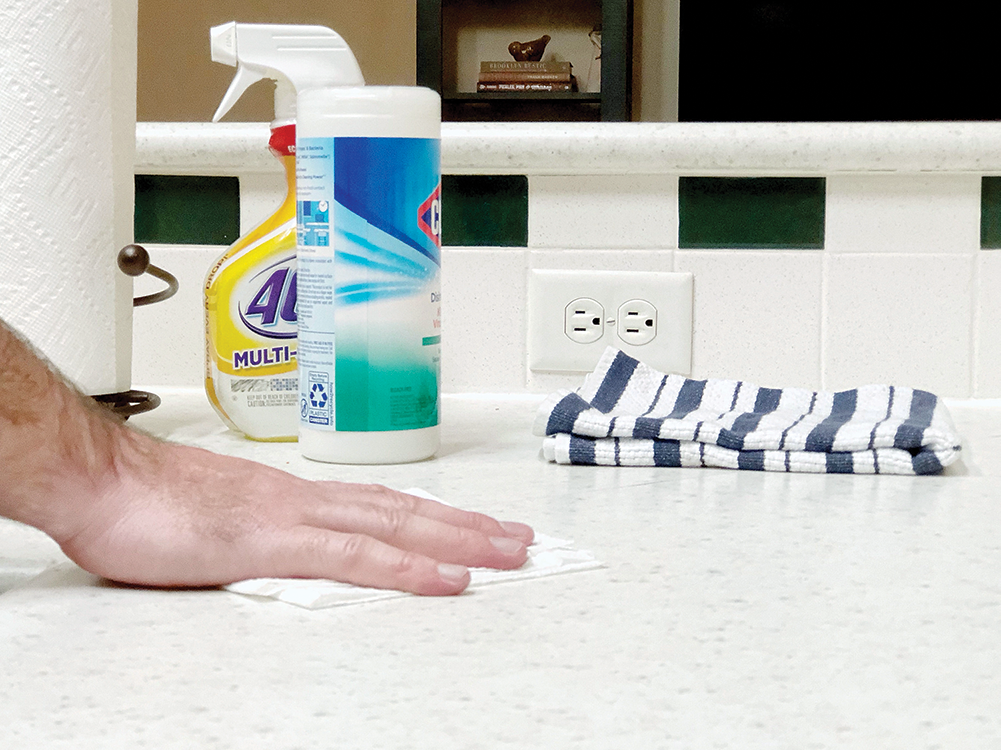By Jerome Houser
At perhaps no other time in history is the topic of infection prevention as important as it is today, thanks to COVID-19, the viral respiratory illness. But the common cold remains common, and common sense infection prevention is always relevant.
Infections are caused by four agents: bacteria (Strep infection), fungi (athlete’s foot), parasites (Lyme disease, contracted from infected ticks) or viruses (such as COVID-19). The length and severity of any infection varies with the type and ag- gressive nature of the causing agent.
Additionally, a person can have more than one kind of infection. The focus of this article is to examine potential risk factors in acquiring infections and how to prevent them.
Risk factors for developing infections are numerous. The first factor is age, which refers to lifestyle, typically. Alcohol and cigarette consumption can impair the body’s immune systems. The second factor is suppressed immune systems from diseases (such as AIDS), clinical treatments (chemo and radiation therapies) and repressive drug therapies for auto-immune diseases (rheumatoid arthritis or systemic lupus erythematosus). These types of diseases and treatment regimens limit the production of white blood cells and other defensive protein factors.
The third factor deals with major systemic diseases (those of the heart, kidneys and lungs) and diabetes (Type 1 — also an autoimmune disease). These conditions weaken the body’s defenses. The severity of the immune system compromise will be determined by the acuteness and kind of disease.
The fourth factor is improper food preparation and storage. This is a real problem in the summertime. Food not properly cooked or stored can easily attack the digestive system with bacteria or parasites. Additionally, some raw foods can infect the liver and cause Hepatitis A.
The fifth and final factor is eating disorders and nutritional deficiencies (such as Vitamin D deficiencies). Without proper nutrients, the body will lack the materials to form antibodies and other immune components.
Sometimes, healthy individuals take their fully functional immune system for granted. But infection prevention becomes critical for individuals with lower immune defense systems, especially chemotherapy patients.
The acronym “B, C, Ds” provide the foundation for practical infection prevention. These letters represent “B” for physical barrier, “C” for clean and cover, and “D” for personal distance.
The physical barrier prevents contact with potential infected surfaces. For instance, a towel is a great barrier on hospital wheelchairs or doctors’ office seats or personal car seats. Also, towels can be placed on patients’ beds, during visits from clinical personnel or visitors.
The letter “C” stands for clean and cover. Clean refers to sanitizing touchable surfaces (cellphones, cooking surfaces, TV remotes, etc.) and washing your hands. Cover denotes placing some bandage or gauze over an open wound or broken skin. These actions work together to limit access of infectious agents to the body.
The letter “D” is a reference to personal or social distancing. It simply means that you limit your time near a sick person and give them a little space away from you.
Many items are useful in infection prevention: aprons, bandages, cleaning agents (disinfectants, soap and water), goggles, gloves, and mosquito repellants. To be proactive in infection prevention, it becomes a lifestyle and not just a seasonal activity (like spring cleaning).
This is very important concept for people who live with loved ones in high-risk situations. Infection prevention programs help validate the old maxim “An ounce of prevention is worth a pound of cure.”
Jerome Houser, BSc., M.A., D.C., is the au- thor of “A Clinician’s Guide to Caregiving” and cared for his elderly parents for 10 years.
Know the difference between disinfecting and sanitizing

When it comes to cleaning, not all jobs are created equal. When you’ve got a big mess in the kitchen – do you clean, disinfect or sanitize? These terms are often used interchangeably, but believe it or not, each are different.
Cleaning dirt or food from a surface, for example, doesn’t necessarily kill germs and bacteria that can cause us to become sick. That’s why it’s important to know the difference between disinfecting and sanitizing. The CDC offers the following guidance.
Disinfecting kills germs on surfaces or objects. Disinfecting works by using chemicals to kill germs on surfaces or objects. This process does not necessarily clean dirty surfaces or remove germs, but by killing germs on a surface after cleaning, it can further lower the risk of spreading infection. Hospitals, for example, disinfect areas that have come into contact with bodily fluids, and parents typically disinfect areas where a baby’s diaper is changed.
Sanitizing lowers the number of germs on surfaces or objects to a safe level, as judged by public health standards or requirements. This process works by either cleaning or disinfecting surfaces or objects to lower the risk of spreading infection. Most people sanitize kitchen surfaces that come into contact with food.
Pay close attention to hazard warnings and directions on product labels. Cleaning products and disinfectants often call for the use of gloves or eye protection. For example, gloves should always be worn to protect your hands when working with bleach solutions.
Visit cdc.gov/coronavirus for more information on how to protect yourself and your family.




